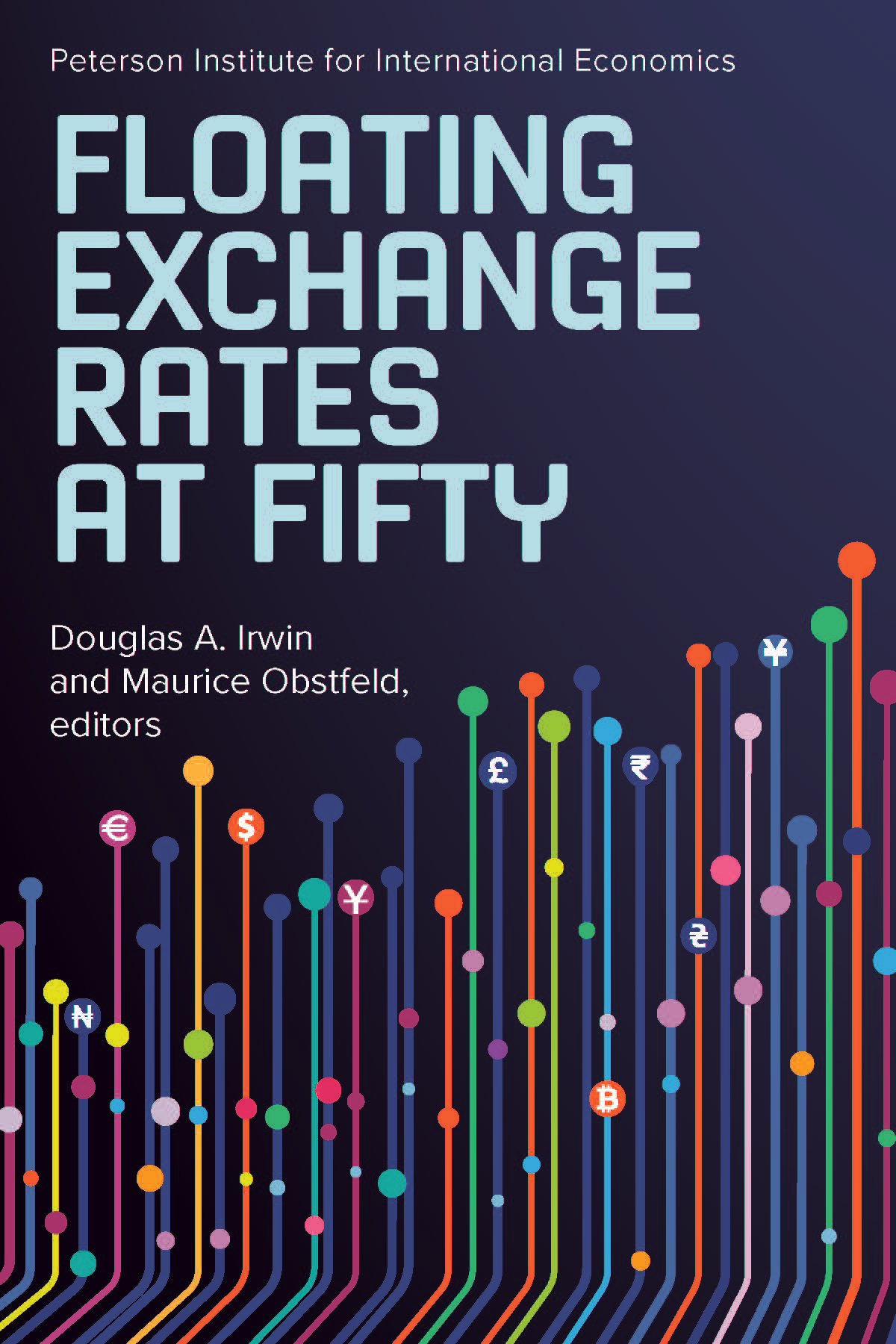 Floating Exchange Rates at Fifty
Floating Exchange Rates at Fifty
Douglas A. Irwin and Maurice Obstfeld, eds.
PIIE Press
Washington, DC, 2024, 384 pp., $25
This splendid conference volume comprises 28 succinct essays by top researchers and policymakers on the switch to floating exchange rates in 1973, plus an introduction by Maury Obstfeld and Doug Irwin, the editors. Its breadth, depth, and clarity attest to the quality of the editors and the extent of the network of the Peterson Institute for International Economics.
The diversity of topics, approaches, and conclusions makes reading the book feel a bit like looking through a kaleidoscope—fun and a bit disorienting in the best sense of that word. The initial section, “Historical Perspective on 1973 and its Legacy,” illustrates the diversity of conclusions. While essays by Anne Krueger and Fred Bergsten are relatively positive, seeing floating as better than the alternatives, Robert Aliber views it as the cause of serial financial instability. The section also contains a fair bit of discussion of political economy constraints to improvements in the system, a theme that runs through the book.
The move to floating rates was a leap in the dark that turned out very differently from expectations. Exchange rates did not adjust smoothly but jumped around because financial transactions have always dominated those associated with trade, as noted by Hyun Song Shin. This financial dominance also explains why the demise of fixed dollar parities enhanced the role of the dollar, reflecting the unparalleled breadth and depth of US financial markets. In addition, the desire to stabilize exchange rates across European countries following the demise of dollar parities launched the monetary cooperation that culminated in the euro, as discussed by Philip Lane. Finally, most people expected the floating rate system to be a temporary stopgap, yet it remains, albeit with less-effusive accolades than might be expected on a golden anniversary.
Another theme running through the book is the evolution of the system. The early years of floating were beset by many financial and currency problems as countries sought to replace fixed parities with a different monetary anchor. Gradually, a new system emerged in advanced economies comprising inflation targeting, free-floating rates, and deep and highly integrated capital markets anchored on the dollar.
This integration and dependence on US markets caused major problems during the 2008 North Atlantic financial crisis, which led the Federal Reserve to arrange swap agreements with other major central banks and effectively made it the lender of last resort for the advanced world.
The book pays welcome attention to the experience of emerging markets, whose evolution has been slightly different and significantly rougher. While the more successful emerging markets have adopted inflation targeting and floating rates, their thinner domestic capital markets and lack of access to swap lines make them more vulnerable to financial shocks. This explains their continued use of intervention and capital controls. The last major regional bloc wedded to dollar pegs is Middle Eastern oil producers, reflecting their shallow capital markets and geopolitical considerations, as discussed by Adnan Mazarei.
The final section addresses the future of the dollar, the euro, and the renminbi. In contrast to the diversity of views elsewhere, there is relative unanimity that the dollar will remain the dominant currency for at least the next decade, since neither the euro area nor China offers the financial depth needed to replace it.
This book is a treasure trove of information and insight. I learned an awful lot from reading it and am sure you will too.
Opinions expressed in articles and other materials are those of the authors; they do not necessarily reflect IMF policy.








